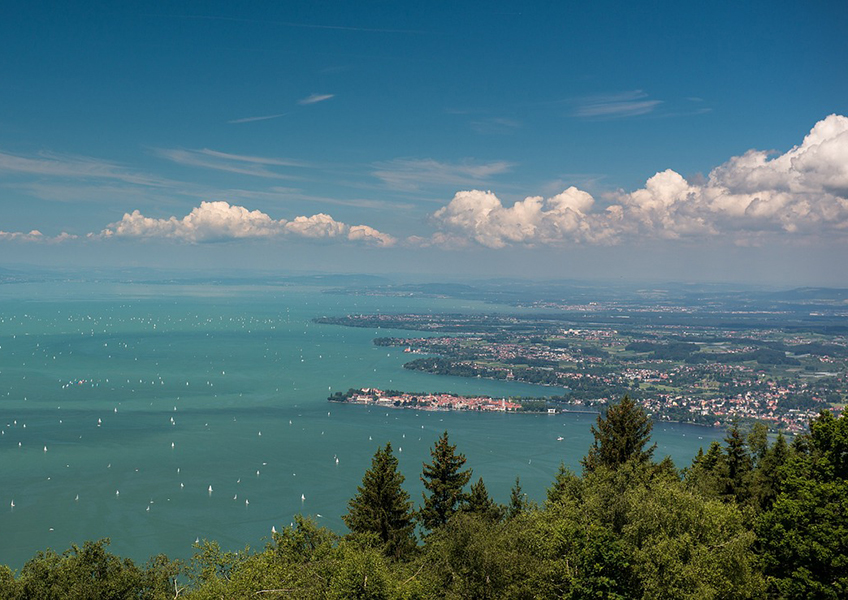GERMANY, AUSTRIA & SWITZERLAND, EUROPE
Lake Constance
Lake Constance is a stunning freshwater lake located at the northern foot of the Alps, bordered by Germany, Austria and Switzerland. Lake Constance and is the second largest freshwater lake in Central Europe, covering an area of approximately 536 km². Lake Constance is not only a geographical crossroads, but also an oasis of natural beauty, cultural richness and recreational activities.
The lake's ecosystem is diverse and supports various fish species such as whitefish, perch and lake trout. The surrounding wetlands and nature reserves contribute to the overall biodiversity, making Lake Constance an important habitat for birds and other wildlife. The lake's pristine waters and Alpine backdrop create a breathtaking environment that attracts visitors from all over the world.
What makes it special
Lake Constance has two almost separate parts - the Upper Lake and the Lower Lake. The two parts are connected by the Seerhein, a short section of the Rhine that flows through the city of Konstanz.
Protection status
· Ramsar Sites 89 and 275, Wetland of International Importance
· EU Natura 2000
· Several Special Protection Areas at the Shores

Biodiversity
Despite a wide range of human activities, Lake Constance has preserved a natural landscape rich in biodiversity. Around 200.000 water birds rest or hibernate in the region. These include around 80.000 Tufted Ducks, 50.000 Pochards and 7.000 Great Crested Grebes. The waters of Lake Constance are teeming with fish – 26 different species live there.

Local Communities
3,9 million People live, work and relax in the Lake Constance region, which covers an area of around 12.500 square kilometers. 4,5 million People drink Lake Constance water and up to 50.000 boats are based on the lake.
Threats
Lately, the most frightening threat is the invasion of the lake with the quagga mussel. Scientists detected the first specimen in 2017. Surveys from 2023 show that not a single square meter in the lake is free from quagga today. This already led to changes in the lakes ecology, as water is getting even cleaner. The rare behaviour of stickleback and the lack of whitefish could be related with that. Climate changes and the lake changes. Stratification and the patterns of the water level altered in past years, leading to unpredictable mechanisms in the lake.

Our Work
The Lake Constance Foundation is a private organisation for environmental protection and nature conservation in Radolfzell, Germany. The project-oriented foundation works towards more sustainability and nature protection in the international Lake Constance area and beyond. In the fields of agriculture & food, energy transition, nature and water conservation, business & biodiversity and environmental education, the Lake Constance Foundation focuses on both the big picture and concrete implementation. In over 40 model projects, the LCF has shown that sustainable development does not have to remain an empty phrase, but can be put into practice.
Lake Constance Foundation

Co-funded by the European Union. Views and opinions expressed are however those of the author(s) only and do not necessarily reflect those of the European Union or CINEA. Neither the European Union nor the granting authority can be held responsible for them.



